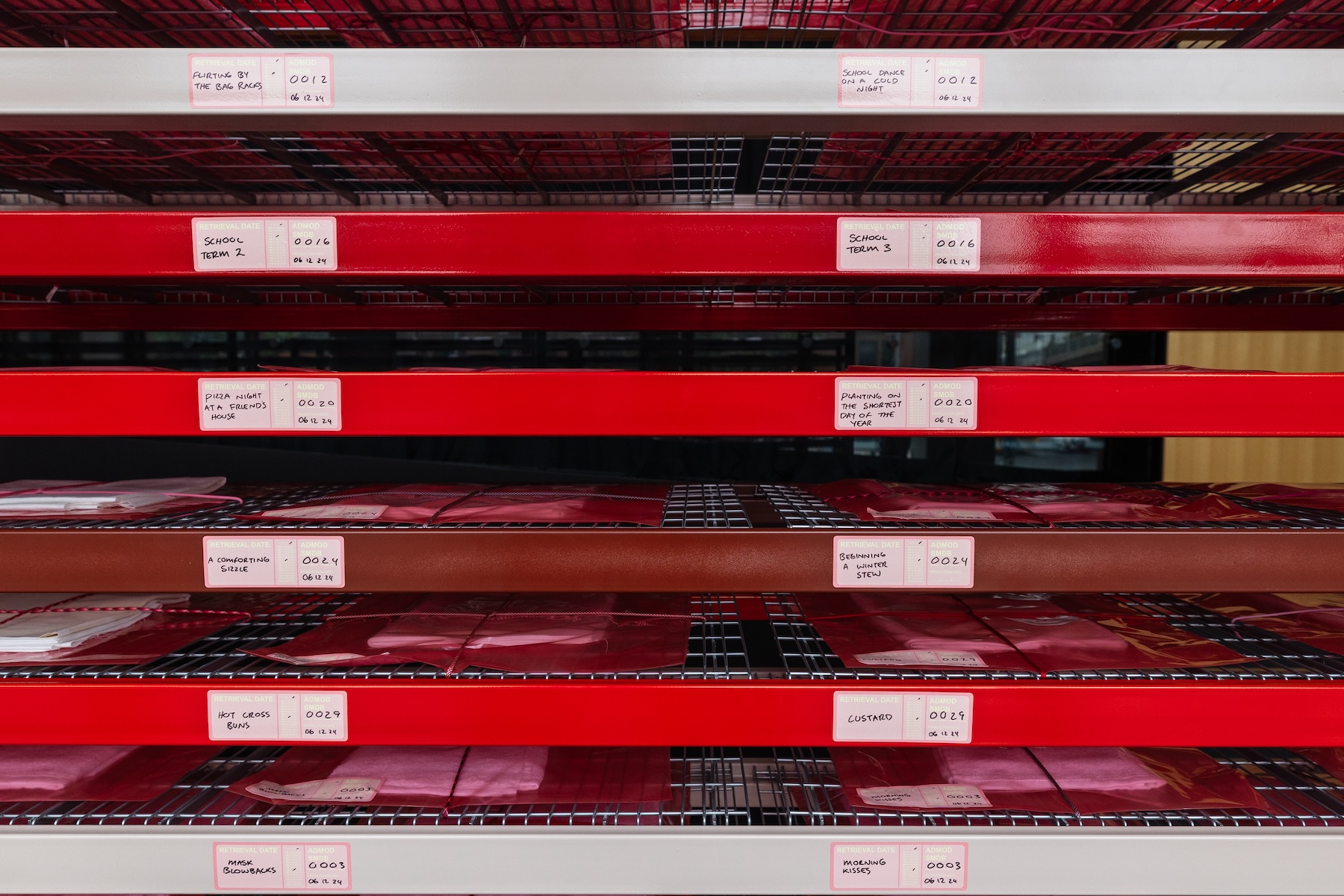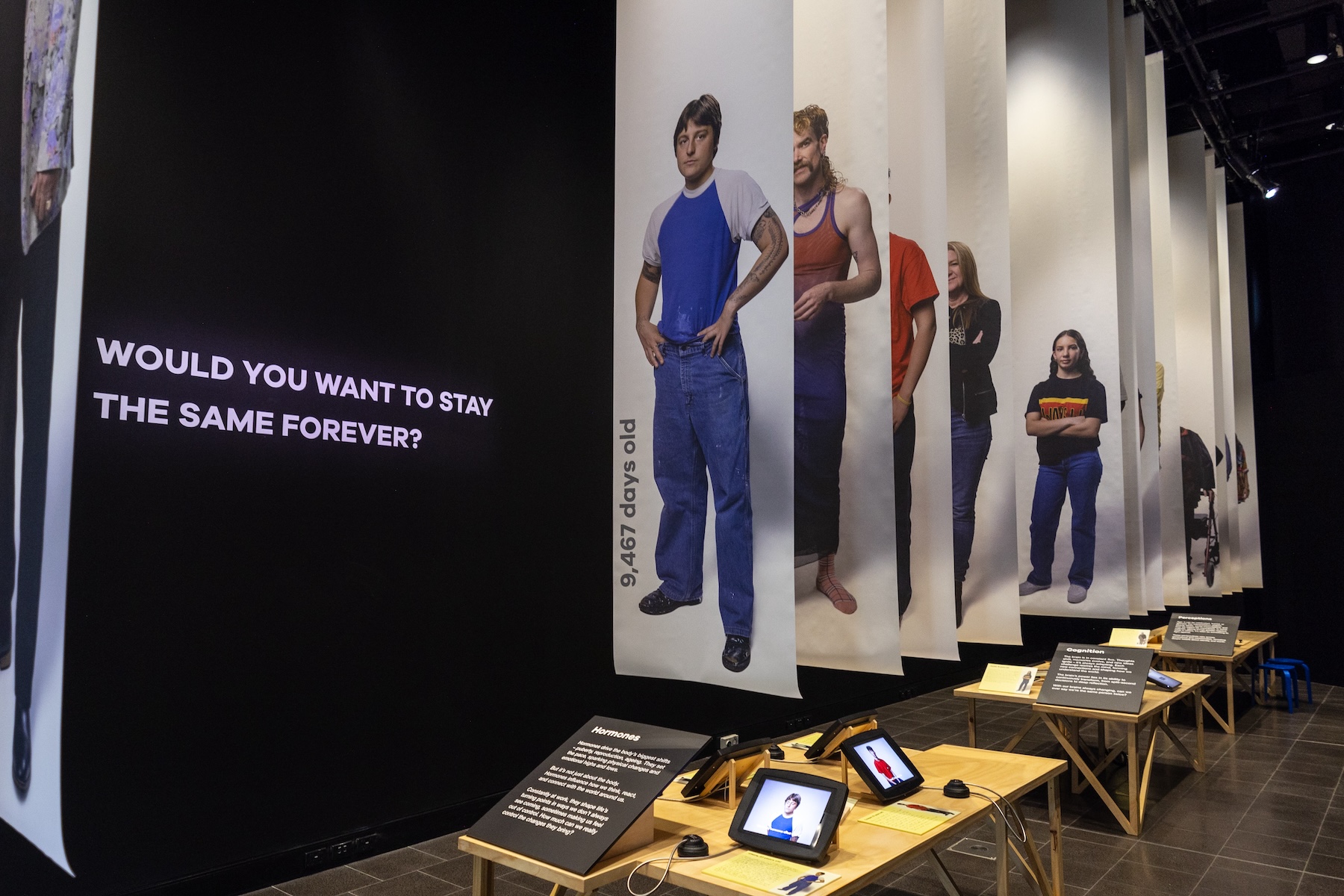Floating through FOREVER: reckoning with life, death and time
From smelling hot cross buns and the school bus in summer to answering existential questions, deciding on water cremation and considering organ donation, MOD.’s FOREVER exhibition pins down meaning in the vast expanse of infinity.

Understanding ourselves is a plight humankind has been plagued with since we began. But in an increasingly busy and demanding world, there’s often limited time to reflect. The University of South Australia’s Museum of Discovery (MOD.), however, invites us to lean into curiosity and contemplation in FOREVER, an eight-part exhibition traversing beginnings, time, memory, the universe, change, endings, and infinity. With its signature blend of science and art, research and interactivity, MOD. serves up an accessible space to ponder.
The first exhibit, Beginnings, explores the origins of life, consciousness, and what connects us to one another. In low lighting, a playful, winding space is formed with strings hanging from ceiling to floor. Wonderings about consciousness are answered through circular insets in a wall, placed at different heights and depths, encouraging visitors to crouch down and lean forward like an inquisitive child to make their discoveries.
The past is also symbolised through a series of polished rocks that were once alive and which humans share key genes with. Sculptor Peter Syndicas presents a selection of stromatolites – fossil remains of ancient South Australian microbial reefs – which are extremely smooth on the surface, but wildly detailed within, like the wood of a tree or a fingerprint. The long history of First Nations peoples is also represented here through Ngarrindjeri, Ngadjuri, Narungga and Wirangu artist Sonya Rankine’s skill of weaving, handed down over thousands of generations, which visitors are invited to try their hand at.

Down the ramp at the Memory exhibit, the scent of musk wafts in the air. At a set of red industrial shelves, visitors are again encouraged to lean in and time-travel through smell. Hundreds of cloths are labelled with specific scents, like hot cross buns, custard and afternoon wedding. While a recent cold made some of them difficult to detect, stronger ones like pizza night, spice rack and pumpkin chai stood out. The wheat pack’s lavender transports me to my grandmother’s house, as does egg sandwiches. On the opposite side of the shelf, smelling again without the labels, I find myself drawn to the spice rack and the wheat pack for a second time. What are the chances?
Upstairs is Change, a highlight of the exhibition. A corridor-like room emphasises the length of life, asking: would you want to stay the same forever? Vertical banners hang from above, displaying images of people at different stages of life, along with their ages in days. This choice begs the question if, as the old adage goes, life really is too short, or quite long. Handwritten stories and video interviews tell individuals’ touching anecdotes of change in their lives, such as how hormones manipulate our bodies against our will and make us vulnerable. Listening to this through a headphone creates an intimate experience, evident in a toddler’s surprised look as she hears a clear voice in her ear.
"An emotional reminder that everyone experiences change and the fear of it. It can be the same as your own or different, but it doesn’t last forever."
At the end of the hall, visitors are invited to ask a question about life and place it on the wall for someone else to answer. Teenagers discuss each other’s questions about friendship, a 40-something responds to a toddler about play, and a 99-year-old puts a 30-year-old at ease about getting older. The activity is an emotional reminder that everyone experiences change and the fear of it. It can be the same as your own or different, but it doesn’t last forever.

Subscribe for updates
Plush couches and bean bags create a comfortable space to sit and process the two Endings exhibits. Walking in through sheer white sheets to the first room, a quiz doesn’t shy away from intense topics such as voluntary assisted dying, knowing about when you will die, and whether death can be good or bad, scary or not. The second room reveals that a cremation creates 400 kilograms of greenhouse gas emissions, while natural burial and human composting are carbon neutral, and you can even have your body dissolved by a highly alkaline solution. Intriguing fragments about grieving and endings are also spelled out on a magnet board by visitors: “I’m happy falling”, “I play grow a garden for eternity”, “weep nothing wonder wish”.
While the exhibition deals with confronting and difficult issues, it avoids being eerie and is instead wondrous, calming and engaging. FOREVER’s interactivity is arguably its strongest suite, for which it won an Adelaide Fringe Weekly Award. Visitors should allow a day to delve into each nook and cranny FOREVER has to offer, because time – although infinite – seems to also go so quickly.
FOREVER is showing at MOD. until November 21
Sarah Herrmann is the latest recipient of the Helpmann Academy InReview Mentorship. She is working with experienced visual arts writer Jane Llewellyn to write a series of articles for publication in InReview, funded by the Helpmann Academy.

